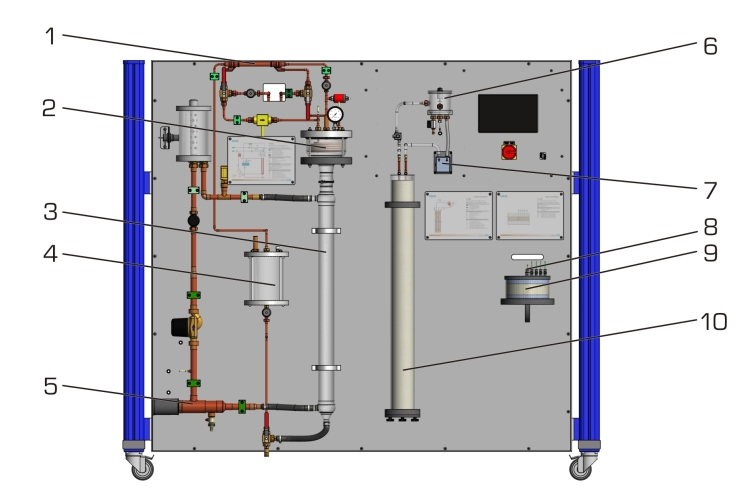In shallow geothermal energy generation the thermal energy stored under the earth’s surface is used for heating purposes.
ET 262 demonstrates the operation of a geothermal probe with heat pipe principle. The transparent experimental set-up provides an insight into the closed circuit of the heat transfer: it allows a clear view on the evaporation in the heat pipe, the condensation in the probe head and the reflux of the heat transfer medium on the inside wall of the heat pipe. The set-up also allows to take a closer look at the basic methods applied for determining the thermal conductivity of the surrounding soil of the geothermal probe.
The heat pipe whose operating behaviour is examined constitutes the core element of the trainer. The heat pipe contains a low-boiling heat transfer medium. The heat input from the soil is simulated via a temperature control jacket with heating circuit. The heat from the heat transfer medium is transferred to a working medium inside the probe head. Sensors detect the temperature and flow rate of the working medium in the heat exchanger. These measured values are used to calculate the thermal power that is transferred. The GUNT software uses the measured values to simulate the energy balance of a connected heat pump.
One method to determine the thermal conductivity of the surrounding soil is the so-called thermal response test. A pump circulates constantly heated water through a U-tube geothermal probe that is sunk in sand. During this process, the inlet and outlet temperature, the flow rate and the heating power of the geothermal probe are recorded. These measured values are used to calculate the thermal conductivity.
During another experiment, a sand cylinder is heated with a cylindrical heat source. The radially dispersed thermal temperature profile within the sand sample is detected and used to calculate the thermal conductivity within the sand sample. The results of both methods will then be compared.
The measured values are transmitted directly to a PC via USB where they can be analysed using the software included.


















